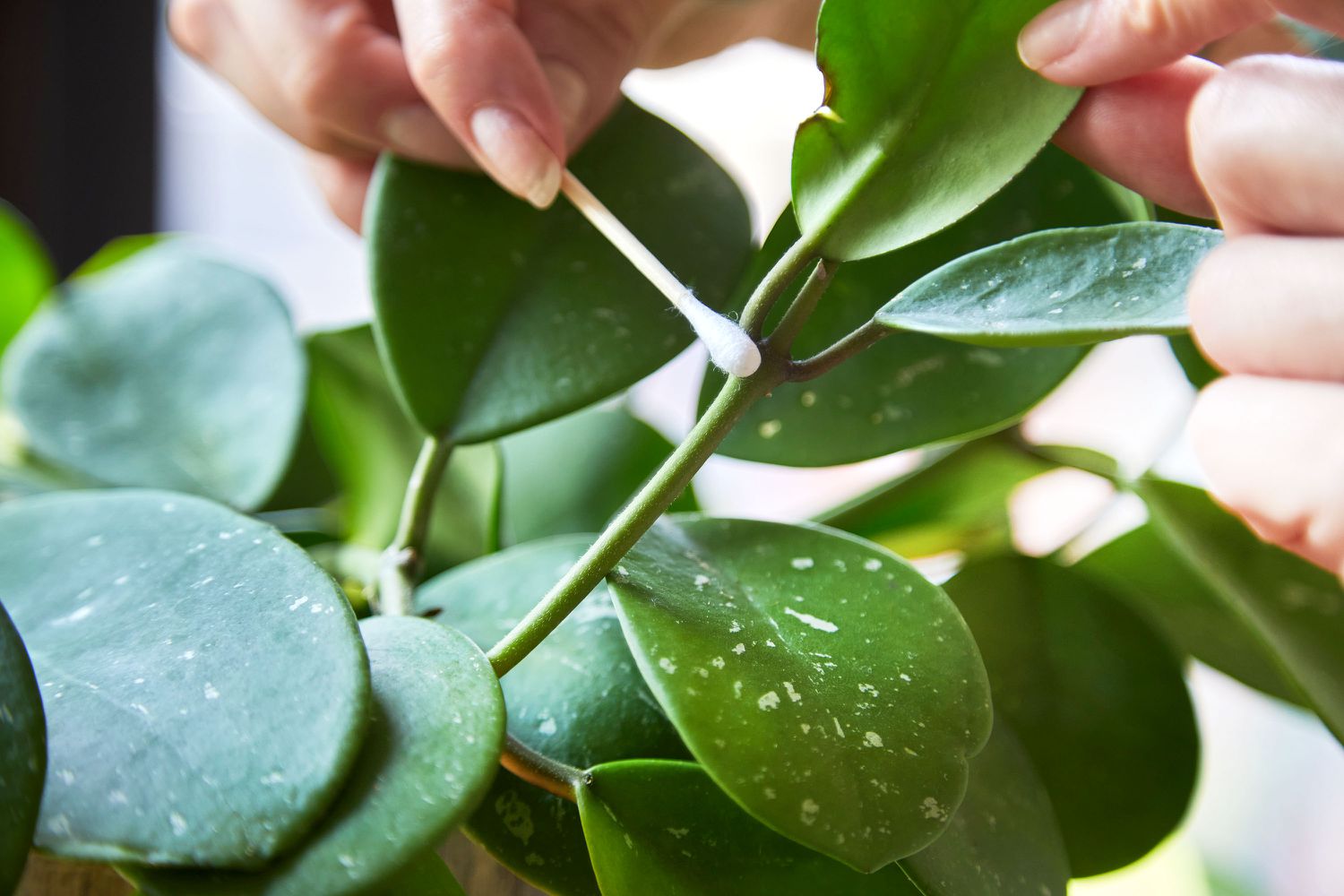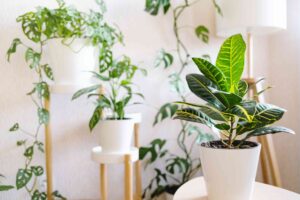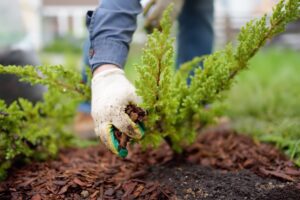How To Get Rid of Aphids on Houseplants: Complete Guide
Are tiny green bugs taking over your beloved indoor garden? If you’ve noticed sticky residue on your houseplant leaves or clusters of small insects gathering on stems and new growth, you’re likely dealing with aphids. These common pests can quickly damage your indoor plants if left untreated, but with the right approach, you can eliminate them effectively and prevent future infestations.
This comprehensive guide will walk you through everything you need to know about identifying, treating, and preventing aphid infestations on your houseplants. Whether you prefer natural remedies or commercial solutions, you’ll find practical, actionable advice to keep your indoor garden thriving and aphid-free.
What Are Aphids and Why They’re a Problem
Aphids are small, soft-bodied insects that feed on plant sap. These pear-shaped pests typically measure 1/16 to 1/8 inch long and come in various colors including green, yellow, black, brown, and even pink. While they may seem harmless due to their size, aphids can cause significant damage to your houseplants when their populations explode.
How to Identify an Aphid Infestation
Before you can effectively treat aphids, you need to confirm their presence. Here are the telltale signs that your houseplants are hosting these unwanted guests:
- Clusters of tiny insects on new growth, stem joints, and the undersides of leaves
- Sticky residue on leaves and surrounding surfaces (this is honeydew, a waste product excreted by aphids)
- Black sooty mold growing on the honeydew
- Yellowing, curling, or distorted leaves
- Stunted growth in new shoots and buds
- Wilting despite adequate watering
According to the United States National Library of Medicine’s agricultural research database, aphids not only damage plants directly through feeding but can also transmit plant viruses and attract other pests like ants, which protect aphids to harvest their honeydew.
Why Aphids Love Your Houseplants
Understanding why aphids target your indoor plants can help you prevent future infestations. These pests thrive under specific conditions:
- Nitrogen-rich environments – Overfertilized plants with excess nitrogen produce tender, succulent growth that aphids love
- Warm temperatures – Indoor conditions provide ideal year-round temperatures for aphid reproduction
- Absence of natural predators – Indoor environments lack the beneficial insects that would normally control aphid populations outdoors
- Crowded plants – Tightly packed houseplants create ideal hiding spots and easy movement from plant to plant
Effective Methods to Eliminate Aphids from Houseplants
Now for the most important part—getting rid of these persistent pests. The following methods range from gentle manual removal to stronger chemical treatments, allowing you to choose the approach that best suits your comfort level and the severity of the infestation.
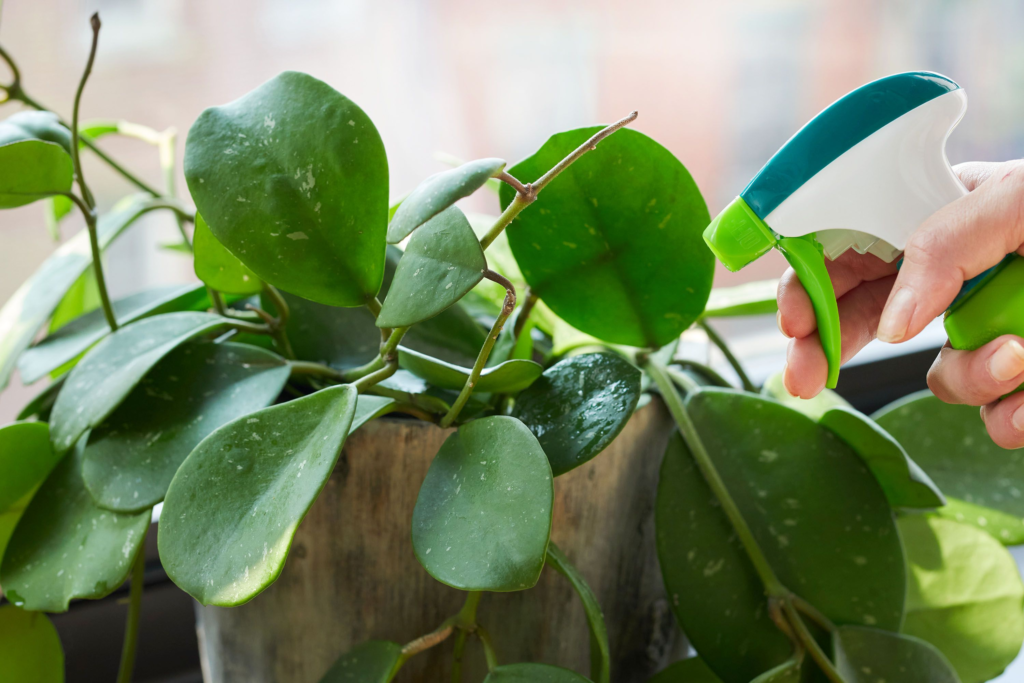
Non-Chemical Control Methods
1. Water Spray
One of the simplest ways to remove aphids is with a strong stream of water. Take your plant to the sink or shower and thoroughly spray the leaves (especially the undersides) with room-temperature water. This physically dislodges the aphids without harming your plants. For stubborn infestations, repeat this process every 2-3 days for two weeks.
2. Manual Removal
For light infestations, you can manually remove aphids by:
- Gently wiping leaves with a damp cloth
- Using cotton swabs dipped in rubbing alcohol to directly touch and kill individual aphids
- Pruning heavily infested leaves or stems (dispose of these in sealed plastic bags)
3. Insecticidal Soap
Insecticidal soaps are effective against aphids while being gentler on plants than chemical pesticides. These products work by breaking down the protective outer layer of the aphids’ bodies, causing them to dehydrate and die.
DIY Insecticidal Soap Recipe:
- 1 tablespoon mild liquid soap (free of dyes, fragrances, and degreasing agents)
- 1 quart water
- Optional: 1 teaspoon neem oil for added effectiveness
Mix the ingredients in a spray bottle and apply directly to affected areas, making sure to coat both sides of leaves where aphids hide. Reapply every 5-7 days until the infestation is controlled.
4. Neem Oil
Neem oil is a natural insecticide derived from the neem tree. It disrupts the aphids’ hormonal systems, preventing them from feeding and reproducing. According to the Environmental Protection Agency (EPA), neem oil is considered safe for use around people and pets when used as directed.
To use neem oil:
- Purchase a premixed neem oil spray or create your own by mixing 2 teaspoons of neem oil with 1 teaspoon of mild liquid soap and 1 quart of water
- Spray all plant surfaces thoroughly, focusing on stem joints and leaf undersides
- Apply in the evening to prevent leaf burn
- Repeat weekly for at least three weeks
Chemical Control Options
When natural methods aren’t enough to control severe aphid infestations, you may need to consider chemical options.
1. Systemic Insecticides
Systemic insecticides are absorbed by the plant and distributed throughout its tissues. When aphids feed on the plant sap, they ingest the insecticide and die. These products offer longer-lasting protection than contact insecticides but should be used with caution, especially on edible houseplants.
2. Pyrethrin-Based Insecticides
Derived from chrysanthemum flowers, pyrethrin-based insecticides offer quick knockdown of aphid populations. Look for products labeled specifically for indoor use on houseplants. Always follow the manufacturer’s instructions carefully.
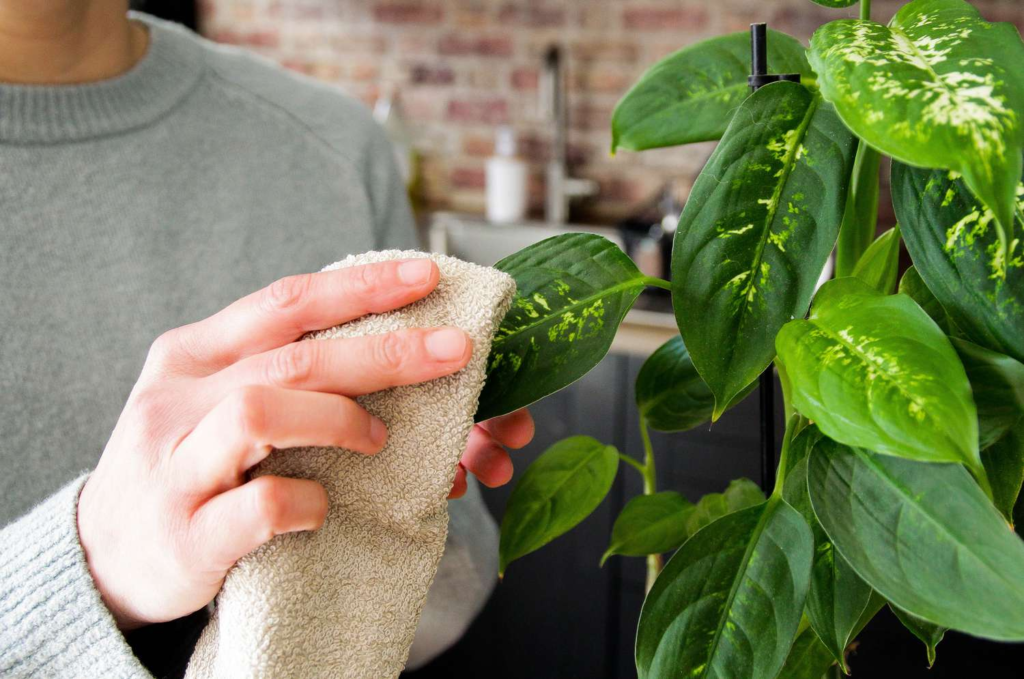
Comparison of Aphid Treatment Methods
The following table compares the effectiveness, safety, and application considerations of different aphid control methods:
| Treatment Method | Effectiveness | Environmental Impact | Safety Around Pets/Children | Duration of Protection | Best For |
|---|---|---|---|---|---|
| Water Spray | Moderate | None | Very Safe | 1-2 days | Light infestations |
| Manual Removal | Low-Moderate | None | Very Safe | 1-3 days | Very light infestations |
| Insecticidal Soap | Moderate-High | Low | Safe when dry | 5-7 days | Light to moderate infestations |
| Neem Oil | High | Low | Moderate (keep pets away until dry) | 7-14 days | Moderate infestations |
| Systemic Insecticides | Very High | Moderate | Use with caution | 30-60 days | Severe infestations |
| Pyrethrin-Based Products | High | Moderate | Use with caution | 7-14 days | Moderate to severe infestations |
Prevention: Keeping Aphids Away from Your Houseplants
Once you’ve successfully eliminated aphids, you’ll want to prevent their return. The following preventative measures will help keep your indoor garden aphid-free:
1. Quarantine New Plants
Aphids often enter homes on newly purchased plants. Always isolate new additions to your plant collection for at least two weeks, carefully inspecting them for signs of pests before introducing them to your other houseplants.
2. Regular Inspections
Make it a habit to check your plants weekly for early signs of aphid activity. Pay special attention to new growth and the undersides of leaves where aphids typically begin their colonies.
3. Maintain Optimal Growing Conditions
Healthy plants can better withstand and recover from pest attacks. Provide your houseplants with:
- Appropriate light levels
- Correct watering (avoid overwatering)
- Proper nutrition without excessive nitrogen
- Good air circulation
4. Introduce Beneficial Insects
For serious gardeners with multiple houseplants, beneficial insects can provide ongoing aphid control. According to the USDA’s Agricultural Research Service, ladybugs and lacewings are natural predators of aphids and can be purchased from garden centers or online suppliers.
Natural Aphid Repellents for Houseplants
Several plants naturally repel aphids due to their strong scents or other properties. Consider incorporating these aphid-repellent plants into your indoor garden:
- Garlic – The strong sulfur compounds repel many insects including aphids
- Chives – Related to garlic with similar repellent properties
- Catnip – Contains nepetalactone, which strongly repels aphids
- Nasturtiums – Can act as “trap plants” that attract aphids away from your other houseplants
You can also create natural repellent sprays using these plants. For example, steeping garlic cloves in water for 24 hours creates a spray that deters aphids when applied to plant leaves.
When to Dispose of Heavily Infested Plants
Sometimes, despite your best efforts, an aphid infestation becomes too severe to treat effectively. Signs that it might be time to dispose of a plant include:
- The plant is severely weakened with extensive damage
- Multiple treatment methods have failed
- The infestation is spreading rapidly to nearby plants despite isolation
- The plant’s value doesn’t justify the time and expense of continued treatment
If you must dispose of a plant, seal it in a plastic bag before placing it in the trash to prevent the aphids from spreading to outdoor plants or returning to your home.
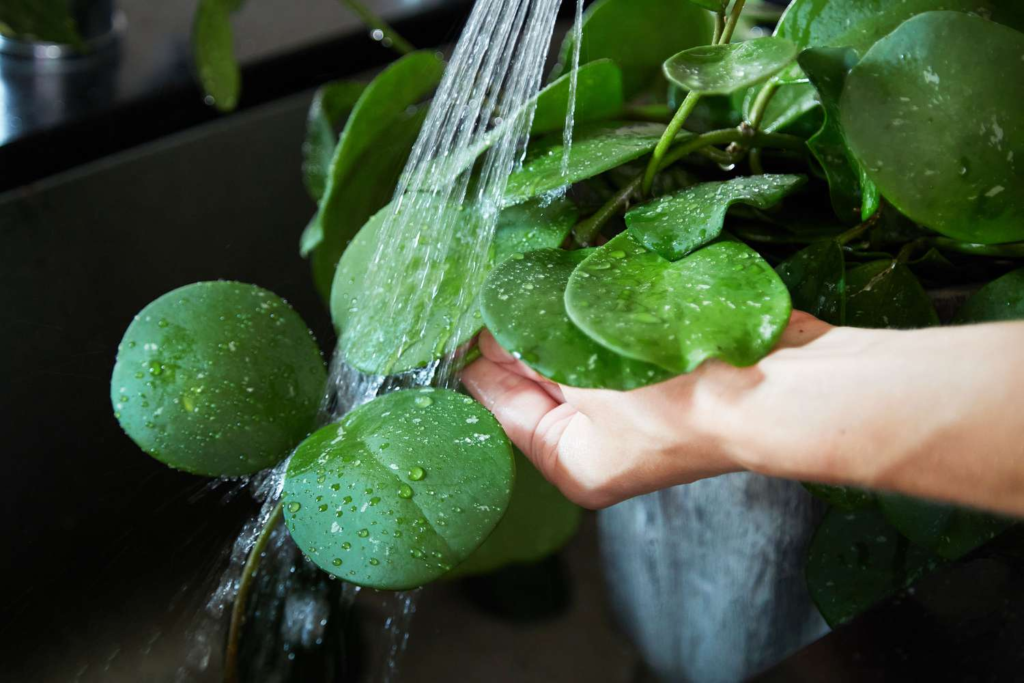
Special Considerations for Different Houseplant Types
Different types of houseplants may require specific approaches when dealing with aphids:
Succulents and Cacti
These plants have delicate protective coatings that can be damaged by oil-based treatments. For these plants:
- Focus on manual removal and water sprays
- If using insecticidal soap, dilute it further than the standard recommendation
- Avoid oil-based products entirely
Tropical Foliage Plants
Plants like pothos, philodendrons, and peace lilies are particularly susceptible to aphid damage but generally tolerate most treatment methods well. For these plants:
- Regular inspection is key, as their dense foliage provides many hiding spots
- Systemic insecticides can be particularly effective for plants with many leaves
- Consider bottom-watering to avoid washing away topical treatments
Flowering Houseplants
For plants like African violets and orchids:
- Avoid spraying flowers directly, as moisture can cause spotting and decay
- Focus treatments on stems and leaf undersides
- Consider removing open blooms before treatment to protect them
Companion Planting Strategy for Indoor Gardens
Strategic placement of plants can help minimize aphid problems in your indoor garden. Consider these combinations:
- Place aphid-repellent herbs like rosemary or thyme near susceptible plants
- Group plants with similar care needs together to maintain optimal health
- Maintain adequate spacing between plants to improve air circulation and reduce pest movement
According to research published by the USDA National Institute of Food and Agriculture, companion planting can reduce pest problems by up to 50% when implemented properly.
Seasonal Considerations for Aphid Control
Aphid populations often surge during specific seasons, even indoors:
- Spring – Watch for increased activity as plants put out tender new growth
- Winter – Monitor plants near heating vents, as the warm, dry air can create ideal conditions for aphid reproduction
- Year-round – Be extra vigilant with plants moved indoors for winter, as they may bring outdoor aphid populations inside
Conclusion: A Holistic Approach to Aphid Management
Successfully managing aphids on your houseplants requires a combination of vigilance, preventative measures, and appropriate treatments. By understanding the biology and behavior of these common pests, you can select the most effective control methods for your specific situation while minimizing risks to your plants, family, and pets.
Remember that complete eradication may not be realistic or necessary—the goal is to reduce aphid populations to levels that don’t significantly damage your plants. With consistent application of the techniques outlined in this guide, you can enjoy a thriving indoor garden free from destructive aphid infestations.
By implementing regular monitoring, proper plant care, and prompt intervention when needed, you’ll develop confidence in managing not just aphids but many common houseplant pests. Your indoor oasis will thank you with healthy growth and beautiful foliage year-round.
